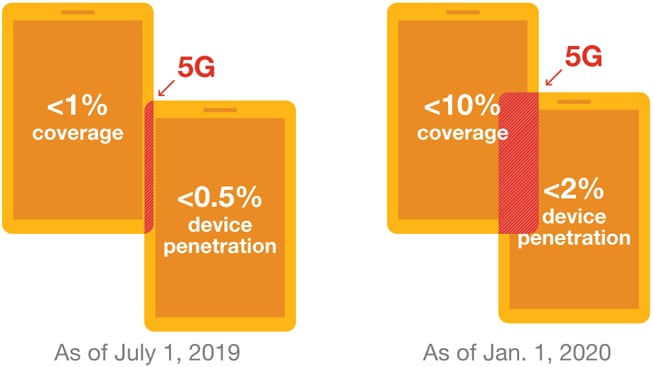Researchers at Broadband Now believe low earth orbit satellite services provided by firms such as Project Kuiper (Amazon) and Starlink (SpaceX) in the United States alone could shave about $30 billion annually off internet service provider revenues, primarily by forcing incumbents to shave prices to meet the threat of new competition.
Some of us believe that is perhaps wildly high, for a few reasons. The mere presence of a new competitor would not drive prices so much as that new competitor’s ability to take market share from incumbents. So revenue impact depends on LEO providers taking significant market share.
If it turns out that most customers for any new LEO service come from areas where a wired network cannot be sustained, no actual pricing response from rival fixed network suppliers would be expected. They do not expect to compete in very low density areas in any case.
And even where fixed providers do start to see customer erosion, incumbent pricing behavior will hinge on which customers are deserting. If the churn comes from promotionally-priced accounts, incumbents might not feel too threatened, especially if they do not want such accounts.
The lower pricing effect would be greatest if any new LEO service starts to take away customers in the broad middle range of plans (not the slowest, not the gigabit services at the high end).
Still, we are likely to find out what the impact is as at least one of the proposed constellations--Project Kuiper--plans a global network that launches first across the United States.
But to cause savings as big as $30 billion, Project Kuiper would have to attract good numbers of customers in urban and suburban areas as well, areas where the present number of people reached by one to three fixed networks includes roughly 260 million people, or perhaps 113 million households,
With the caveat that I have not independently verified the estimates, the methodology for estimating savings would simply be to assume the additional LEO competition increases the number of competitors in a market by one, and thereby leads to lower average revenue per user characteristic of a market with one additional competitor.
Where an existing market with a single fixed network supplier has ARPU of $68, ARPU would drop to $59. In a two-supplier market where ARPU is $59, the new level of ARPU with three providers would decline to $58.83.
Number of Wired Providers
|
Population Covered
|
Number of Zip Codes
|
Mean Lowest Priced Wired Broadband Plan
|
0
|
9,836,029
|
8,989
|
|
1
|
104,142,401
|
12,259
|
$68.38
|
2
|
75,548,052
|
6,246
|
$59.14
|
3
|
83,380,772
|
3,760
|
$58.83
|
4
|
32,520,715
|
1,250
|
$56.27
|
5+
|
15,563,255
|
485
|
$46.59
|
Grand Total
|
320,991,224
|
32,989
|
$63.40
|
One issue, of course, is that fixed network internet access is not bought by persons, but by locations. One would have to make assumptions about how “population” relates to the number of households. Then one also would have to make assumptions about which plans actually are purchased by households.
The BroadbandNow data makes a comparison based on the “mean lowest priced plans.” That is almost certainly not the type of plan the overwhelming majority of households buy. So the revenue impact is skewed, to the extent that we would have to compare the “most-often purchased” plans in each area, not the lowest price plans.
Much will hinge on how the new LEO providers price and package their services. But price, rather than speed, is likely to be the strategy. The reason is that the easiest market entry strategy is “same product, lower price.”
And though “better product, same price,” or “better product, lower price” might work in some cases, faster speeds will appeal most to some segments of the customer base. For those with no fixed network access, “availability” is the greatest value.
For homes with access, but at slow speeds, “speed” will be the primary draw. For most urban and suburban buyers, the value proposition will be key. LEO service might not so frequently represent higher speeds, though it could represent lower price for a given speed.
The point is that speed, in most cases, will not be a huge driver of value.
In tests of internet access services used by 53 of its journalists, the Wall Street Journal has concluded that most people do not use but a fraction of the capacity they pay for as buyers of fixed network internet access.
Is faster better, for most people? “For most people, the answer is no,” say a team of writers including Shalini Ramachandran, Thomas Gryta, Kara Dapena and Patrick Thomas, writers for the Wall Street Journal.
The big caveat is that this study looked at applications such as video streaming, gaming and other common apps, and were not specially focused on downloading.
As this chart suggests, experience is improved most at the lower end of the speed scale, say 55 Mbps or so. “For a typical household, the benefits of paying for more than 100 megabits a second are marginal at best, according to the researchers” say.
These sorts of results would not be unexpected or unusual by anybody who actually studies such matters.
The upshot is that LEO services are likely to have to compete on price.

